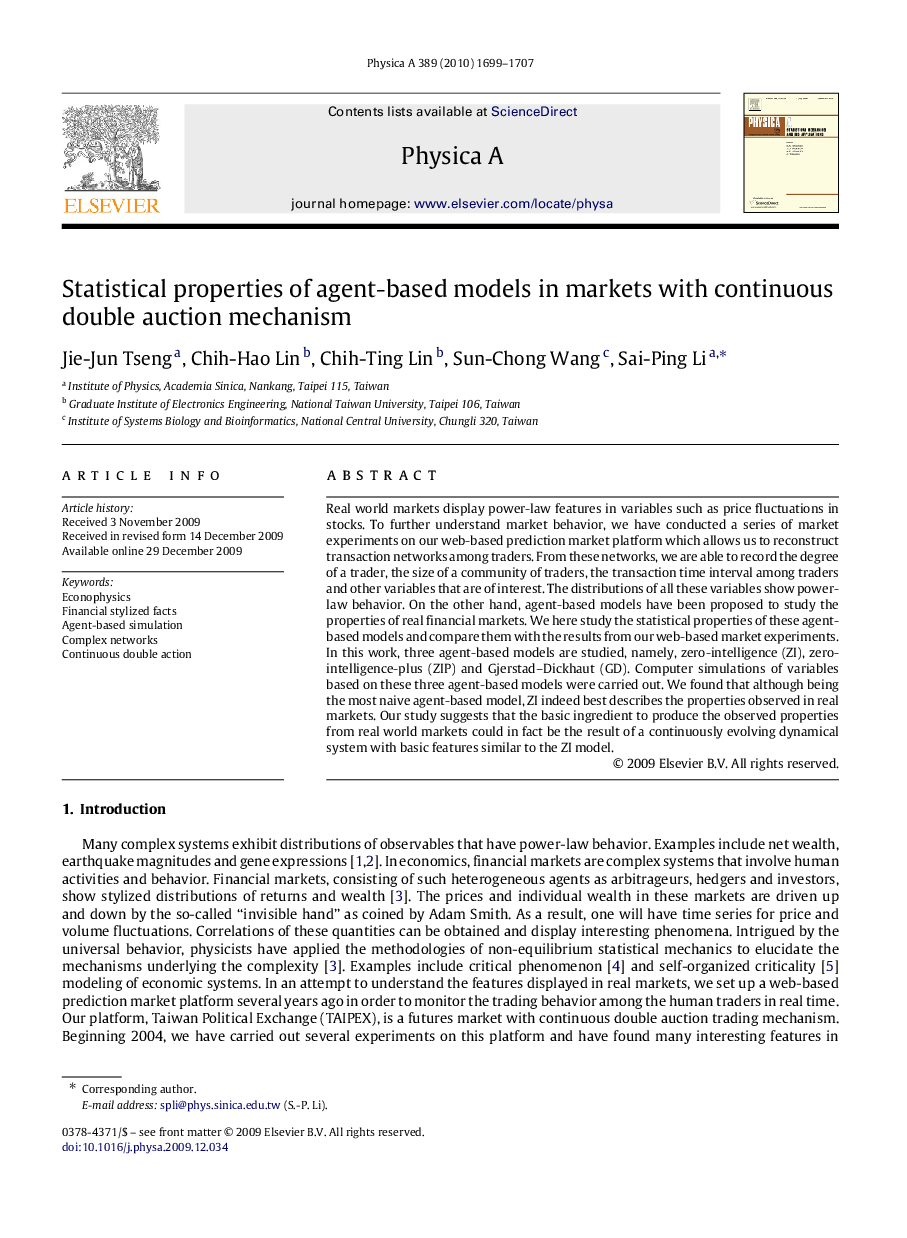| Article ID | Journal | Published Year | Pages | File Type |
|---|---|---|---|---|
| 979028 | Physica A: Statistical Mechanics and its Applications | 2010 | 9 Pages |
Abstract
Real world markets display power-law features in variables such as price fluctuations in stocks. To further understand market behavior, we have conducted a series of market experiments on our web-based prediction market platform which allows us to reconstruct transaction networks among traders. From these networks, we are able to record the degree of a trader, the size of a community of traders, the transaction time interval among traders and other variables that are of interest. The distributions of all these variables show power-law behavior. On the other hand, agent-based models have been proposed to study the properties of real financial markets. We here study the statistical properties of these agent-based models and compare them with the results from our web-based market experiments. In this work, three agent-based models are studied, namely, zero-intelligence (ZI), zero-intelligence-plus (ZIP) and Gjerstad-Dickhaut (GD). Computer simulations of variables based on these three agent-based models were carried out. We found that although being the most naive agent-based model, ZI indeed best describes the properties observed in real markets. Our study suggests that the basic ingredient to produce the observed properties from real world markets could in fact be the result of a continuously evolving dynamical system with basic features similar to the ZI model.
Related Topics
Physical Sciences and Engineering
Mathematics
Mathematical Physics
Authors
Jie-Jun Tseng, Chih-Hao Lin, Chih-Ting Lin, Sun-Chong Wang, Sai-Ping Li,
